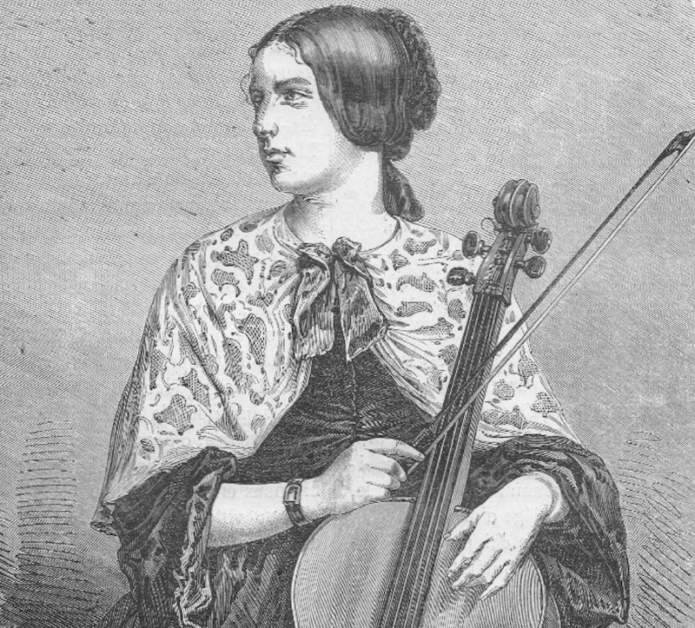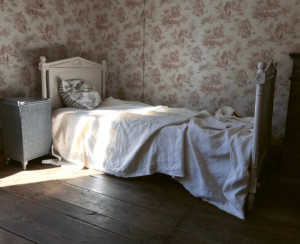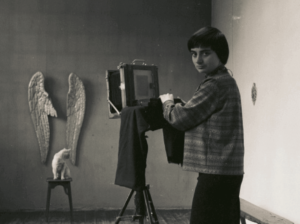De Parijse Lise Cristiani stond op grote podia, reisde duizenden kilometers per slee en stierf jong, ver van huis. Haar reis naar Rusland en haar optredens waren al eens vastgelegd, maar schrijver Waldemar Kamer dook dieper in haar levensverhaal. Tijdens het vertalen van een eerder boek ontdekte hij nieuwe sporen.
Go to the English version of this article.
Je voelde je geroepen door deze celliste?
‘Het was alsof Lise Cristiani me riep. Toen mijn familie hoorde van mijn plan om haar leven te onderzoeken, zeiden ze meteen: “Met jouw dertig jaar werk aan onze familiekroniek is dit echt iets voor jou.”’
Hoe begon dit avontuur?
‘De uitgever van mijn Parijsboek, Elmar, vroeg me het boek over Lise van schrijver René de Vries in het Frans te vertalen: Met een cello door Siberië, het avontuurlijke leven van Lise Cristiani (1827-1853) en haar Stradivariuscello (1700-heden). Ze dachten aan mij, omdat ik als specialist van muziek in de 19e eeuw en gevestigd in Parijs misschien ook nog aanvullende informatie zou kunnen vinden. Want bij gebrek aan betrouwbare bronnen had de auteur sommige passages moeten invullen met fictie.’
Dat wakkerde iets in je aan?
‘Ik dacht: dit verhaal verdient het om écht verteld te worden – en ik stelde René direct bij het eerste gesprek voor om uit zijn “geromantiseerde biografie” samen een echte biografie te maken. Ik wilde gaan zoeken wat zo lang niemand had gevonden.’
Werd het een zoektocht?
‘Zeker. De moeilijkste research die ik ooit heb gedaan of waarvan ik ooit heb gehoord! In het begin had ik zelfs het gevoel dat Lise het me niet toestond om in haar privéleven te graven. Want een van de dingen die ik wilde weten, was haar echte naam en haar werkelijke geboortedatum. Vier jaar lang daagde ze me, bij wijze van spreken, elke dag uit. Soms voelde het alsof ze gewoon bij me in de werkkamer zat.’
Je begon met een speurtocht naar haar geboorteakte?
‘Ja. Kunt pas een biografie schrijven, wanneer je weet waar iemand vandaan komt. We wisten niet eens waar en wanneer ze werd geboren en wie haar ouders waren. Maar het Parijse stadsarchief is in 1871 tijdens de Commune afgebrand, waardoor er geen geboorteakten uit haar tijd zijn bewaard. Ik zocht alles af: doopaktes, notarissen, privécollecties. Urenlang bracht ik door in stoffige archieven, maar die ene akte bleef onvindbaar.’
Je kwam terecht in Palais Garnier?
‘Elke ochtend sprak ik mezelf moed in: “Vandaag vind je iets.” En elke avond keerde ik met lege handen terug. Tot ik op een dag in het Palais Garnier was, het Parijse operagebouw waar ook archiefmateriaal van haar stiefbroer Jules Barbier wordt bewaard. De archivaris ontkende in eerste instantie dat er iets over Lise was, maar ik wilde het heel precies weten en alle privé-documenten bekijken.’
Uiteindelijk mocht je de dozen inzien?
‘Ja, maar alleen onder streng toezicht. Ze waren bang dat er iets gestolen zou worden. In die dozen vond ik aanwijzingen dat er nog een ander archief moest zijn, ooit in handen van de dochter van Jules Barbier. Met hulp van een genealoog kwam ik uit bij een kasteel buiten Parijs.’
De kasteelheer liet je niet binnen?
‘“We hebben niets. Ga weg,” zei hij. Maar ik wist dat hij loog. Toen ben ik alle huizen rond het kasteel langsgegaan. Bij één buurman vond ik papieren die volgens hem afkomstig waren van de zolder van het kasteel. Toen wist ik het zeker: dáár liggen de documenten die ik zoek.’
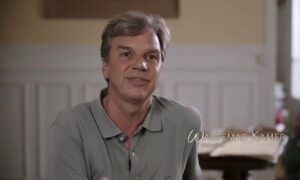
Screenshot van Waldemar Kamer uit de documentaire ‘Mit dem Cello ans Ende der Welt – Sol Gabetta auf den Spuren von Lise Cristiani’
Hoe heb je die uiteindelijk in handen gekregen?
‘Ik heb dat kasteel drie jaar lang belegerd — figuurlijk dan — maar de kasteelheer bleef weigeren.’
Tot je op een dag werd gebeld?
‘De genealoog belde me: “De inboedel van dat kasteel wordt geveild bij Drouot in Parijs.” Ik ben er snel heen gegaan en zag een dikke stapel met het label: “Diverse papieren”. Ik bood meteen honderd euro — veel voor oude papieren! — bang dat iemand anders het zou kopen.’
En wat zat erin?
‘Thuis opende ik de doos en tussen duizend onbelangrijke velletjes vond ik de geboorteaktes van de familie. Na drie jaar zoeken had ik ze eindelijk in de hand. Het voelde alsof Lise zei: “Oké, nu mag je het hebben, hiermee kun je verder.”’
Waarom was die akte zo belangrijk?
‘Lise beweerde dat ze in 1827 geboren was, een burgerlijke achtergrond had en haar ouders “vroeg gestorven waren”. Maar de akte dateert van twee jaar eerder.’
Dat zet veel van haar verhaal in een ander licht?
‘Ze is als “onecht kind” op de wereld gekomen, als dochter van een vrouw uit het theatermilieu, wiens moeder, actrice, vier kinderen gekregen had zonder getrouwd te zijn. Vrij gebruikelijk in het woelige Parijs van na de revolutie, maar in 1844 een zware handicap voor een musicus die in een burgerlijke “salon” wil optreden. Ze moest dus liegen.’
Wat fascineert je aan haar?
‘Ze doorbrak alles wat toen als normaal werd gezien. In 1844 mocht een vrouw in het publiek alleen piano of harp spelen. De cello was taboe — je moest je benen spreiden, het instrument ertussen houden. Bovendien had de cello nog geen pin zoals nu; je moest hem volledig tussen je knieën klemmen. Dat werd als onfatsoenlijk gezien. Haar pleegvader zag juist een kans: “Als jij als jonge vrouw als eerste cello op een concertpodium gaat spelen, krijg je aandacht.”’
En hij kreeg gelijk?
‘Ja, en hoe: het nieuws ging direct de wereld rond! Ze was beeldschoon, had charme en talent. Twee jaar lang toerde ze succesvol door Europa: Parijs, Wenen, Leipzig, Berlijn, Dresden, Hamburg, Kopenhagen, Stockholm en andere steden. In 1847 reisde ze naar Sint-Petersburg, waar artiesten het beste betaald werden. Ze huurde het grootste theater, zelfs twee keer maar trok weinig publiek — de concurrentie was te groot — en ging failliet…’
In plaats van terug naar huis, reisde ze verder Rusland in?
‘Waarom weten we niet precies. Ze sloot zich uiteindelijk aan bij een expeditie van de gouverneur-generaal van Siberië en werd de eerste musicus ooit die concerten gaf op het schiereiland Kamtsjatka. In totaal legde ze 36.000 kilometer af, waarvan 19.000 per slee. ’s Nachts kon het min vijftig graden worden.’
Ze werd ziek?
‘Waarschijnlijk tuberculose. Toch reisde ze door naar de Kaukasus, waar ze optrad voor Russische soldaten in de oorlog tegen Tsjetsjenen. Schrijver Leo Tolstoj woonde zelfs een van haar laatste concerten bij. Uiteindelijk bereikte ze Novotsjerkassk, waar ze in 1853 binnen 24 uur overleed aan cholera. Ze werd slechts 27.’
Je ontdekte nog iets op het allerlaatst?
‘Mijn manuscript was al af toen filmmaakster Simone Jung, die een documentaire over Lise en mijn research maakte, toevallig op het spoor kwam van het poëziealbum van Mendelssohn. Daarin bleek naast gedichten van Goethe en composities van onder anderen Liszt en Chopin een andante van Lise te staan. Dat was een enorme vondst, ook omdat iedereen altijd dacht dat ze niet componeerde. Toen ik het album digitaal kon bekijken, voelde het alsof Lise tegen me zei: “Kijk, dit moet óók nog in het boek.”’
Je voelt een verwantschap?
‘Ik ben altijd onder de indruk van mensen die hun eigen pad kiezen. Op mijn veertiende wist ik dat ik kunstgeschiedenis in Parijs wilde studeren — en ik heb het gedaan. Lise besloot: “Ik ga cello spelen.” En ze deed het. Wat een lef.’
Is het verhaal nu rond?
‘Ons boek verschijnt in november in Parijs samen met een Lise Cristiani-cd van celliste Sol Gabetta, de documentaire van Simone Jung is al te bekijken en komt dan hopelijk in een lange versie in de bioscoop. En we plannen een grote avond voor de 200e verjaardag van Lise op 4 december.’
Maar stel dat…
‘Ik weet zeker dat het onderzoek verdergaat! Wat ik nog altijd zoek, zijn haar originele brieven uit Rusland. Die zijn in de jaren negentig door de vorige kasteeleigenaar verkocht. Misschien liggen ze wel in iemands lade, vergeten tussen stapels papier.’
Jouw droom?
‘Dat iemand mijn boek leest en zegt: “Hé, die brieven heb ik!” Het voelt alsof ik een pact met Lise heb gesloten. Ik breng haar verhaal terug — en zij stuurt me, 180 jaar later, steeds nieuwe aanwijzingen waar ik iets kan vinden.’
Kijken, lezen en luisteren
Tot 26 augustus 2025 is op ARTE.tv de documentaire van Simone Jung te zien in het Duits zien (de originele versie: Mit dem Cello ans Ende der Welt – Sol Gabetta auf den Spuren von Lise Cristiani) of in het Frans. Op 1 oktober verschijnt een cd van de celliste Sol Gabetta (bij Sony), in november verschijnt de (eerste) biografie ‘Lise Cristiani’ van Waldemar Kamer en René de Vries (Bleu Nuit éditeur), gevolgd door twee andere boeken die nog in de maak zijn en geen definitieve titel hebben (alle drie boeken in het Frans).
© Tekst: Monsieur Plusfours 2025; beeldmateriaal via Waldemar Kamer
MELD JE AAN VOOR ONZE GRATIS NIEUWSBRIEF Schrijf je in
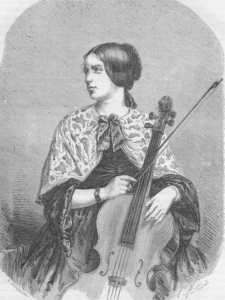
Waldemar Kamer’s quest for Lise Cristiani, the first female cellist on the concert stage
The Parisian Lise Cristiani performed on grand stages, traveled thousands of kilometers by sleigh, and died young, far from home. Her journey to Russia and her performances had been documented before, but author Waldemar Kamer delved deeper into her life story. While translating an earlier book, he discovered new clues.
You felt called by this cellist?
‘It was as if Lise Cristiani was calling me. When my family heard about my plan to research her life, they immediately said: “With your thirty years of work on our family chronicle, this is really something for you.”’
How did this adventure begin?
‘The publisher of my book on Paris, Elmar, asked me to translate René de Vries’ book about Lise into French: Met een cello door Siberië, het avontuurlijke leven van Lise Cristiani (1827-1853) en haar Stradivariuscello (1700-heden) (With a Cello Through Siberia: The Adventurous Life of Lise Cristiani (1827–1853) and Her Stradivarius Cello (1700–present). They thought of me because I specialize in 19th-century music and live in Paris—maybe I could find additional information. Due to a lack of reliable sources, the author had to fill in some parts with fiction.’
That sparked something in you?
‘I thought: this story deserves to be truly told. And in our very first conversation, I suggested to René that we turn his “romanticized biography” into a real one. I wanted to search for what had long remained hidden.’
Did it become a quest?
‘Absolutely. The most difficult research I’ve ever done—or ever heard of! At first, I even felt like Lise wasn’t allowing me to dig into her private life. One of the first things I wanted to know was her real name and birthdate. For four years, she challenged me—figuratively—every day. Sometimes it felt like she was sitting right there with me in my study.’
You started by searching for her birth certificate?
‘Yes. You can’t write a biography if you don’t know where someone came from. We didn’t even know when or where she was born, or who her parents were. But the Paris city archives burned down during the Commune in 1871, so no birth records from her time survived. I combed through everything: baptism records, notarial documents, private collections. I spent countless hours in dusty archives, but that one document remained elusive.’
You ended up at Palais Garnier?
‘Every morning, I told myself: “Today you’ll find something.” And every evening, I came home empty-handed. Until one day, I was at the Palais Garnier, the Paris Opera House, where archives related to her stepbrother Jules Barbier are stored. At first, the archivist denied they had anything on Lise, but I insisted on reviewing all private documents.’
And you finally got to see the boxes?
‘Yes, but only under strict supervision. They were afraid something might be stolen. In those boxes, I found clues that pointed to another archive—one that had belonged to Jules Barbier’s daughter. With help from a genealogist, I tracked it down to a château outside Paris.’
But the château’s owner wouldn’t let you in?
‘“We have nothing. Go away,” he said. But I knew he was lying. So I went door to door around the château. One neighbor had papers he claimed came from the château’s attic. That’s when I knew for sure: the documents I was looking for were there.’

Screenshot showing Waldemar Kamer, taken from ‘Mit dem Cello ans Ende der Welt – Sol Gabetta auf den Spuren von Lise Cristiani’
How did you finally get your hands on them?
‘I laid siege to that château—figuratively—for three years, but the owner kept refusing.’
Until one day you got a call?
‘The genealogist called me: ‘The contents of that château are being auctioned at Drouot in Paris.’ I rushed over and saw a thick bundle labeled “Various papers.” I immediately offered one hundred euros—a lot for old papers!—fearing someone else might buy them.’
And what was inside?
‘At home, I opened the box and among a thousand trivial pages, I found the birth certificates of the family. After three years of searching, I finally held them in my hands. It felt like Lise was saying: “Okay, now you can have it. Now you can move forward.”’
Why was that certificate so important?
‘Lise claimed she was born in 1827, from a respectable background, and that her parents ‘died young.’ But the certificate dates from two years earlier.’
That changes a lot about her story?
‘She was born an “illegitimate child,” the daughter of a woman from the theater world, whose own mother—an actress—had four children out of wedlock. Quite common in post-revolutionary Paris, but in 1844, a serious handicap for a musician wanting to perform in a bourgeois “salon”. So she had to lie.’
What fascinates you about her?
‘She broke every social norm of her time. In 1844, women were only allowed to play piano or harp in public. The cello was taboo—you had to spread your legs and hold the instrument between them. Back then, there was no endpin; you had to clamp the cello fully between your knees. It was considered improper. But her foster father saw an opportunity: “If you’re the first young woman to play cello on a concert stage, you’ll get attention.”’
And he was right?
‘Yes, completely. News of her spread instantly! She was beautiful, charming, and talented. For two years she toured successfully through Europe: Paris, Vienna, Leipzig, Berlin, Dresden, Hamburg, Copenhagen, Stockholm, and more. In 1847, she traveled to St. Petersburg, where artists were paid the best. She rented the largest theater—twice—but drew little audience due to fierce competition and went bankrupt.’
Instead of returning home, she continued deeper into Russia?
‘We don’t know exactly why. She eventually joined an expedition of the Governor-General of Siberia and became the first musician ever to perform concerts on the Kamchatka Peninsula. She covered a total of 36,000 kilometers, 19,000 of which were by sleigh. Night temperatures could drop to minus fifty degrees Celsius.’
She fell ill?
‘Probably tuberculosis. Still, she continued to the Caucasus, where she performed for Russian soldiers during the war with the Chechens. Author Leo Tolstoy even attended one of her final concerts. She eventually reached Novocherkassk, where she died of cholera in 1853—within 24 hours. She was only 27.’
You discovered something else at the very end?
‘My manuscript was already finished when filmmaker Simone Jung—who was making a documentary about Lise and my research—accidentally came across Mendelssohn’s poetry album. Among works by Goethe, Liszt, and Chopin, it also contained an Andante by Lise. A huge discovery, since everyone assumed she didn’t compose. When I viewed the album digitally, it felt like Lise was saying: “Look, this also belongs in the book.”’
You feel a kinship with her?
‘I’ve always admired people who follow their own path. At fourteen, I knew I wanted to study art history in Paris—and I did. Lise said, ‘I’m going to play the cello.’ And she did. What courage.’
Is the story now complete?
‘Our book will be published in November in Paris, alongside a Lise Cristiani CD by cellist Sol Gabetta. Simone Jung’s documentary is already available and will hopefully be released as a full-length film in cinemas. We’re also planning a big celebration for Lise’s 200th birthday on December 4th.’
But what if…?
‘I’m sure the research will continue! What I’m still looking for are her original letters from Russia. They were sold by the château’s previous owner in the 1990s. Maybe they’re sitting in someone’s drawer, forgotten among piles of paper.’
Your dream?
‘That someone reads my book and says: ‘Hey, I have those letters!’ It feels like I’ve made a pact with Lise. I bring her story back—and 180 years later, she keeps sending me new clues.’
Watch, read, and listen
Until August 26, 2025, Simone Jung’s documentary Mit dem Cello ans Ende der Welt – Sol Gabetta auf den Spuren von Lise Cristiani is available on ARTE.tv in German and French. On October 1, a CD by cellist Sol Gabetta will be released by Sony. In November, the (first) biography Lise Cristiani by Waldemar Kamer and René de Vries will be published (Bleu Nuit éditeur), followed by two other books still in development (all three in French).
© Text: Monsieur Plusfours 2025; images via Waldemar Kamer
